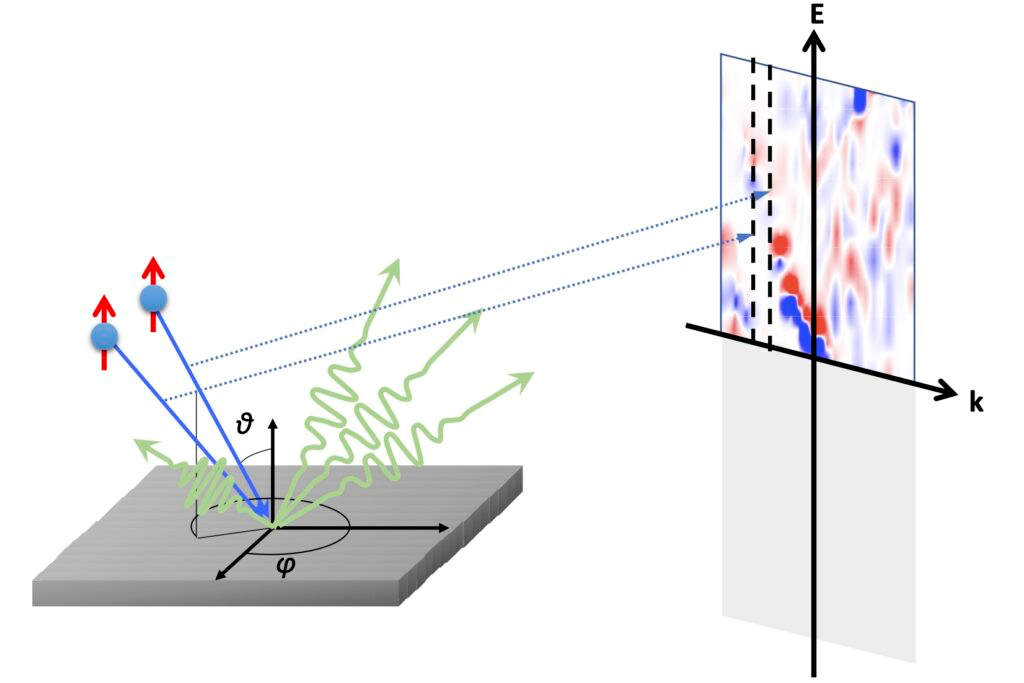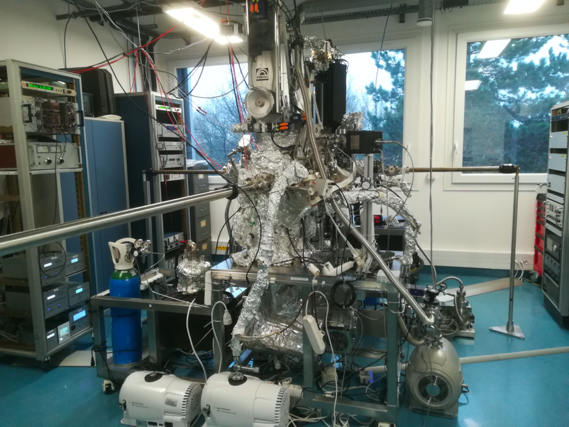Contact: Antonio TEJEDA
Inverse photoemission technique consists in illuminating a sample with low-energy electrons to probe the empty states of the materials. When electrons reach an empty state connected by an allowed transition to a lower energy empty state, the electron relaxation emits a photon providing information on the electronic transition. If both the kinetic energy of the electron beam and its incidence angle on the sample are known, it is possible to determine the empty state of the material. Angle resolved inverse photoemission (ARIPES) allows therefore to determine the conduction band of the studied system. If the electron beam has a well-defined spin orientation, the spin-resolved conduction band can be determined.

Principle of angle-resolved inverse photoemission. When electrons reach the sample and relax inside the solid, photons are emitted to preserve the energy conservation. If electrons reach the sample with a well-defined angle, the energy and momentum conservation at the surface allow to determine the empty states of the solid.
Experimental setup at LPS

The ultra-high vacuum setup consists of two interconnected chambers, the analysis and the preparation chambers.
The analysis chamber allows :
- Wavevector- and spin-resolved inverse photoemission with arbitrary spin orientation tuning.
- Direct photoemission (soon).
- Regulating the temperature down to 10 K.
The preparation chamber allows :
- LEED / Auger spectroscopy
- Sample cleavage
- Ion sputtering
- Annealing to 1000°C and cooling to liquid nitrogen
- Evaporating and gas exposure